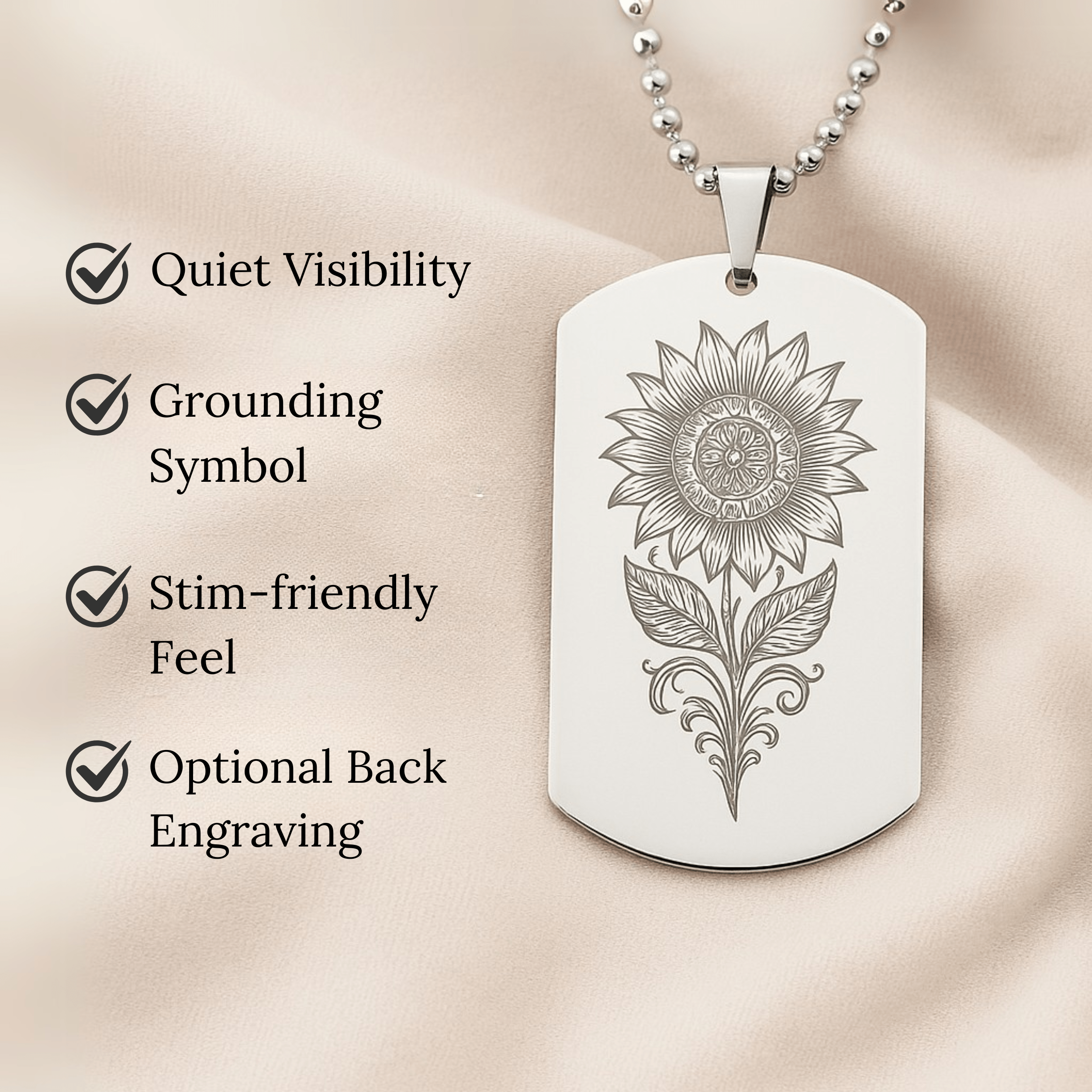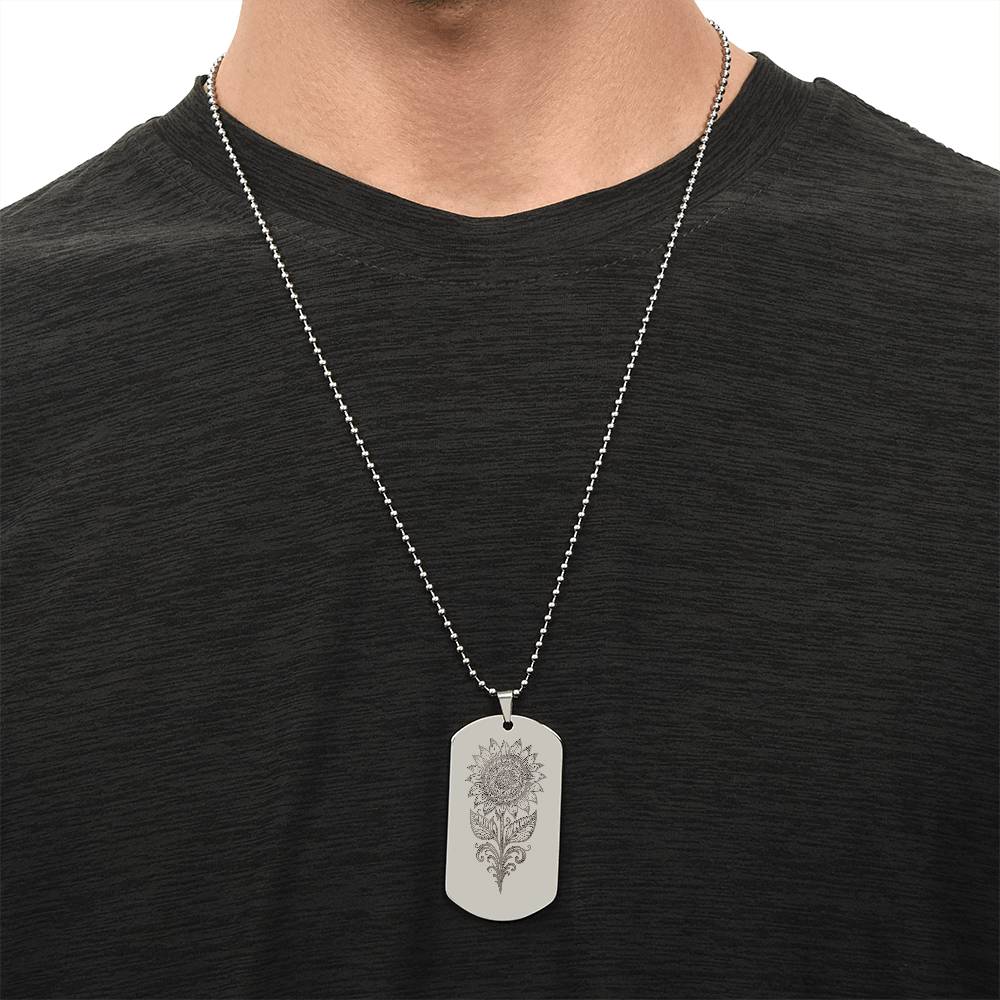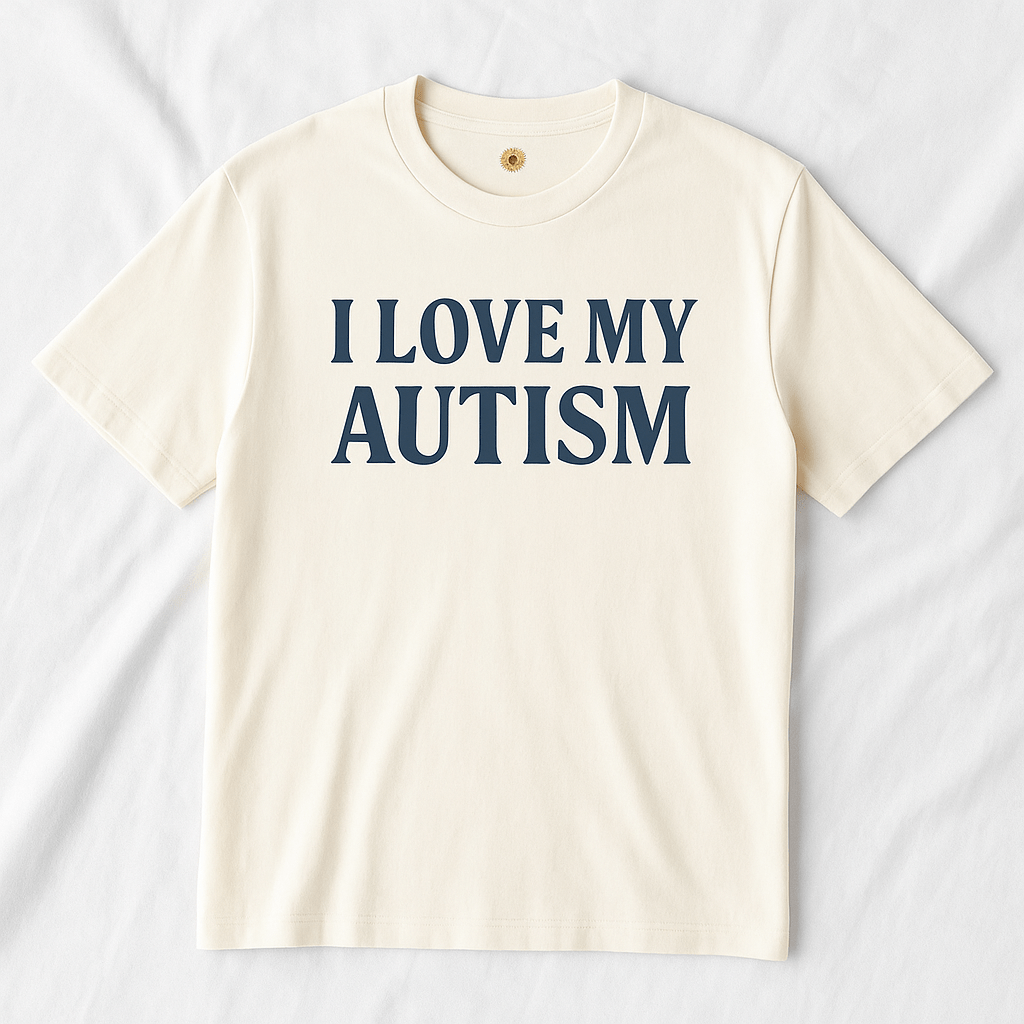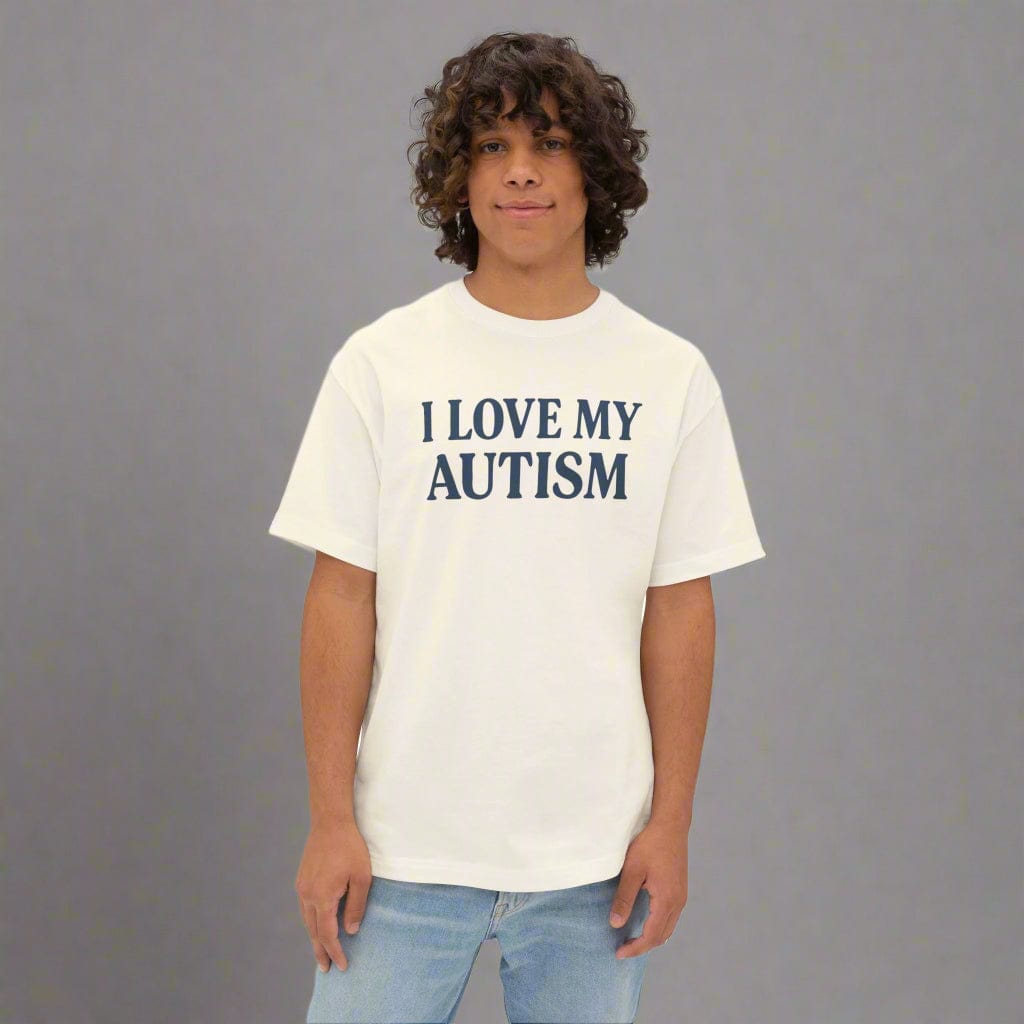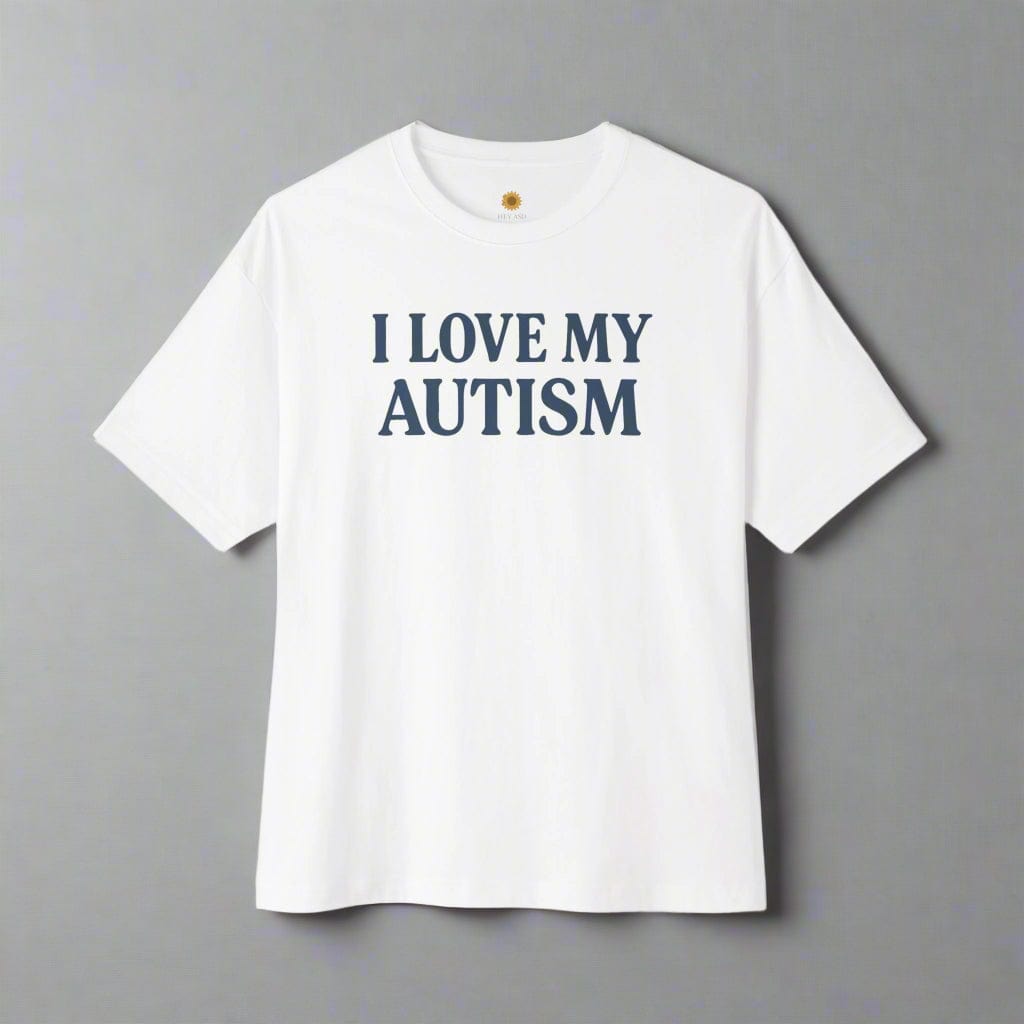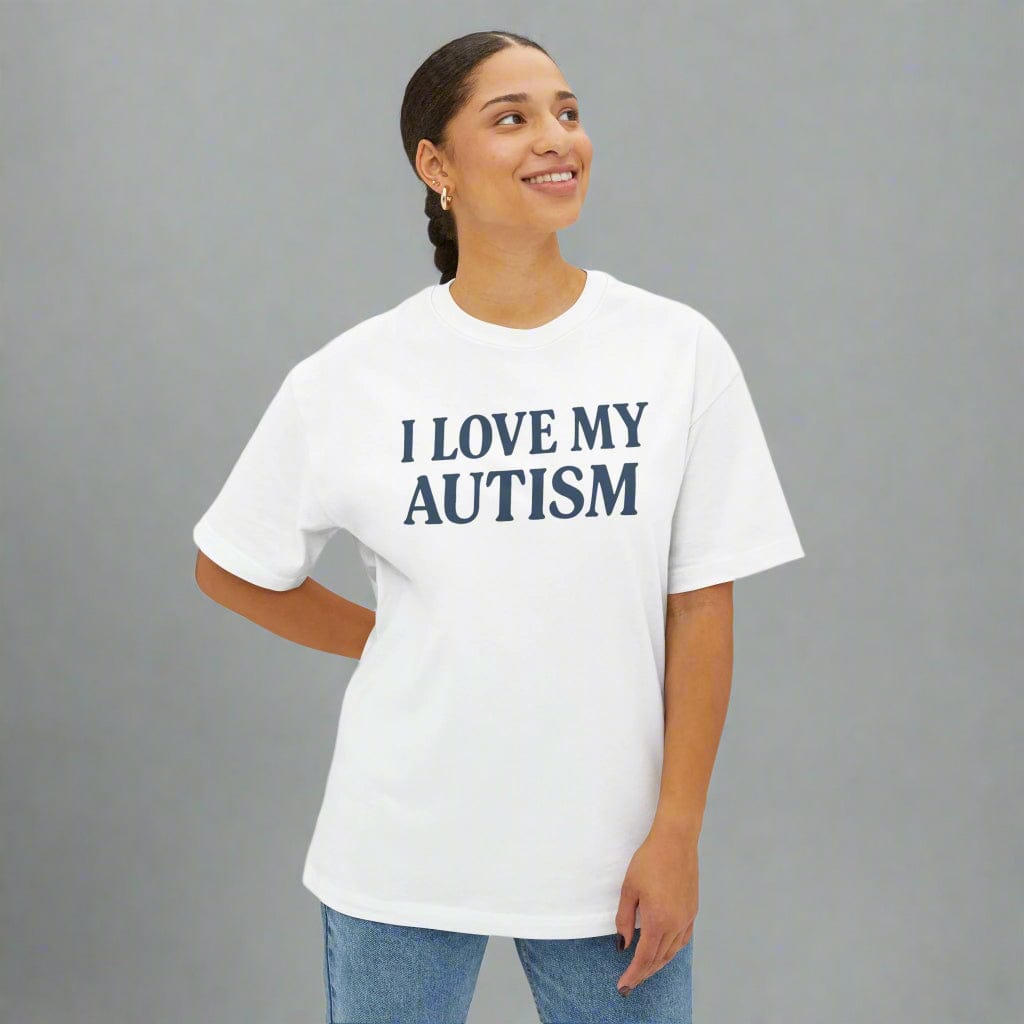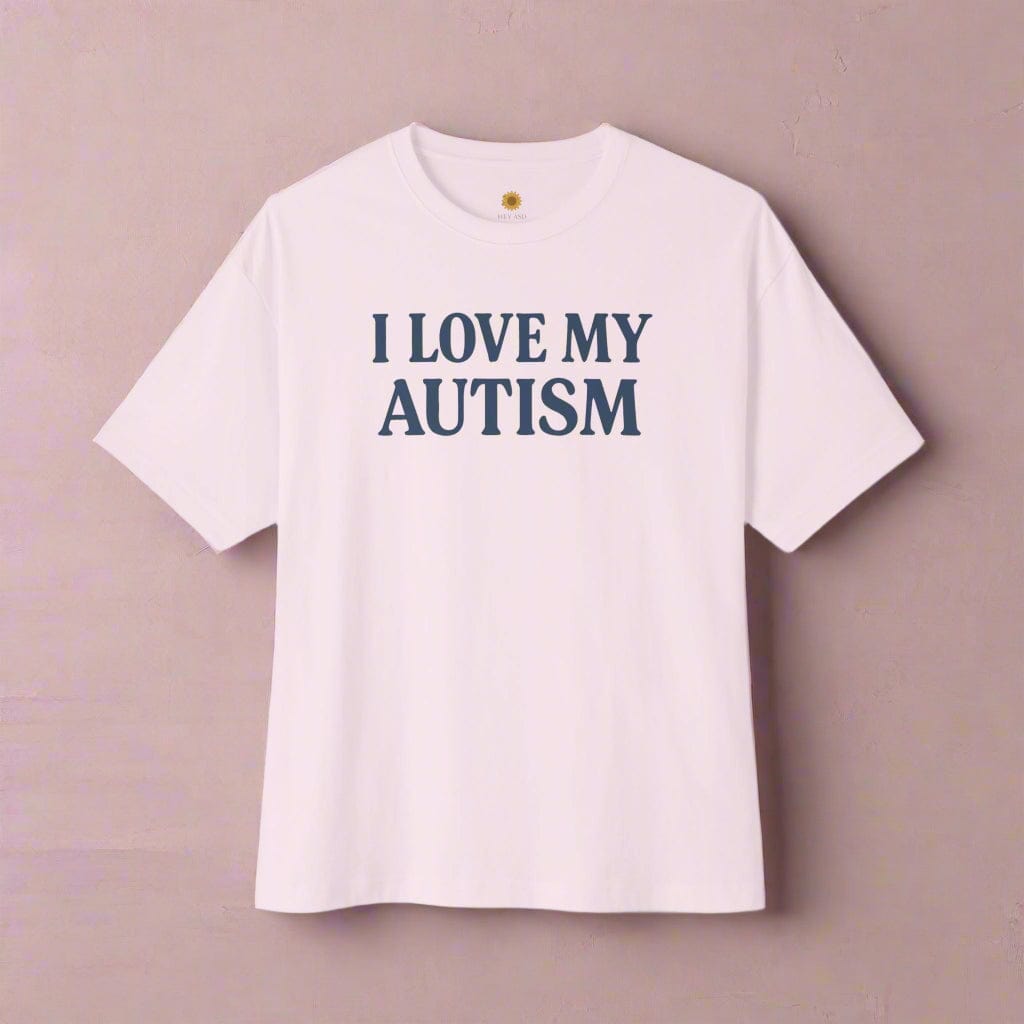Sensory-Friendly Concerts and Music Events

Written by HeyASD.com Team
Sensory-friendly concerts and music events are transformative experiences that cater to the needs of individuals with sensory sensitivities, such as those on the autism spectrum, with PTSD, or other neurodivergent conditions. These events are designed to create an inclusive and welcoming environment for all attendees, ensuring that everyone can enjoy the magic of live performance without the fear of sensory overload. By making thoughtful adjustments to traditional settings, providing specialized training for staff, and engaging in a community-driven approach, event organizers can offer entertainment that truly resonates with a diverse audience.
Key Takeaways
- Sensory-friendly events provide an inclusive space for individuals with sensory needs, promoting diversity, equity, and inclusion in the entertainment industry.
- Adjustments to traditional concert settings, such as reduced volume and lighting, as well as allowing for patron movement, are essential for creating a sensory-friendly experience.
- Staff training and a well-prepared environment are key to accommodating the needs of attendees and ensuring a comfortable and supportive atmosphere.
- Participation in sensory-friendly concerts is often free, with RSVP appreciated, demonstrating a commitment to accessibility and community engagement.
- A three-pronged approach to planning sensory-friendly events includes focusing on the framework for creating inclusive experiences, strategies for event adaptation, and evaluating the success of initiatives.
Understanding Sensory-Friendly Events
Defining Sensory-Friendly Performances
Sensory-friendly performances are transformative experiences designed to welcome individuals with sensory needs, such as those on the autism spectrum. These events are tailored to create a supportive atmosphere that allows for movement and expression without the fear of judgment or discomfort.
- Sensory modifications: Adjustments to sound and lighting to reduce sensory triggers.
- Trained staff: Personnel equipped to understand and respond to sensory-sensitive behaviors.
- Nonjudgmental environment: A space where all patrons can enjoy the event at their own pace.
By embracing these elements, sensory-friendly performances become a beacon of inclusion, offering a safe haven for enjoyment and participation. The goal is to ensure that everyone, regardless of sensory processing differences, can experience the joy of live entertainment.
Sensory-friendly events are not just a niche offering; they represent a commitment to Diversity, Equity, and Inclusion (DEI), opening doors to a surprisingly large audience.
From the gentle dimming of lights to the freedom to move about, these performances redefine the traditional theater-going experience. They are a testament to the power of empathy and understanding in crafting events that resonate with all attendees.
The Importance of Inclusive Entertainment
Inclusive entertainment is not just a nice-to-have; it's a must for a society that values diversity and equality. Entertainment should be accessible to everyone, regardless of their sensory needs. By embracing inclusivity, events can become a shared joy, transcending barriers and fostering a sense of community.
Inclusive events cater to a wider audience, including individuals with autism, who may find traditional settings overwhelming. Sensory-friendly concerts and music events are designed to create a comfortable and engaging experience for all attendees. This approach not only benefits those with sensory sensitivities but also enhances the overall atmosphere, making it more welcoming and relaxed.
- Sensory modifications to reduce overstimulation
- Quiet zones for decompression
- Trained staff to assist attendees
Inclusivity in entertainment is a reflection of our commitment to equality and respect for all individuals. It's about creating spaces where everyone can enjoy the magic of music without the fear of sensory overload.
The Impact on Individuals with Sensory Needs
Sensory-friendly events are not just a niche offering; they are a gateway to inclusion for a diverse audience. Individuals with sensory sensitivities, such as those who are autistic, neurodivergent, or have PTSD, experience profound benefits from these adapted environments. These events cater to a wide range of needs, creating a space where everyone can enjoy the magic of music without the fear of sensory overload.
Sensory-friendly concerts and music events are transformative, offering a reprieve from the overwhelming stimuli of traditional settings and fostering a sense of belonging.
The ripple effect of these events is significant, as they also serve to educate and sensitize the broader public to the experiences of those with sensory needs. By attending, individuals without sensory sensitivities gain insight and empathy, contributing to a more understanding and inclusive society.
- Awareness: Attendees learn about sensory needs and accommodations.
- Comfort: Reduced sensory triggers mean a more comfortable experience for all.
- Enjoyment: Everyone can engage with the music on their own terms.
- Community: These events build connections among diverse groups.
In essence, sensory-friendly events are a celebration of diversity, where the joy of music is accessible to all, and the barriers to participation are dismantled.
Planning for Inclusivity
Key Considerations for Event Organizers
When planning a sensory-friendly event, selecting the right location is crucial. Choose a venue that is spacious enough to prevent overcrowding and ensure comfort for all attendees. Good acoustics and minimal echo are essential to avoid sensory overload.
Minimizing background noise is another key consideration. Loud announcements or unnecessary background music can be distressing for individuals with sensory sensitivities. Instead, focus on the core elements of your event and keep noise levels in check.
Incorporate quiet zones within the event space. These areas provide a retreat for guests who need a break from the stimulation. It's not just about the space, but also about the people. Empower your staff with training on sensory-friendly practices to create a welcoming atmosphere.
Lastly, manage expectations by being transparent about the event's schedule and activities. Providing information in advance allows guests to prepare and select experiences that align with their sensory needs.
Training Staff for Sensory-Friendly Services
Empowering your event staff with sensory-friendly training is a cornerstone of creating an inclusive atmosphere. This specialized training closes the knowledge gap, ensuring that all team members are equipped to provide a supportive environment for guests with diverse sensory needs.
- Understanding Sensory Needs: Staff learn to recognize and respond to various sensory sensitivities.
- Communication Skills: Training includes how to effectively communicate with guests who may require different forms of interaction.
- Emergency Protocols: Clear guidelines on how to handle situations that may arise with guests experiencing sensory overload.
By investing in staff training, you're not only enhancing the event experience for individuals with sensory needs but also fostering a culture of empathy and awareness among your team.
Additionally, offering sensory kits—with items like noise-canceling headphones and fidget toys—can empower guests to manage their sensory experience independently. It's a tangible way to show that your event is thoughtfully catering to all attendees.
Creating a Welcoming Environment
Creating a welcoming environment is pivotal for sensory-friendly events. Empowered staff are the cornerstone of this atmosphere, where training in sensory sensitivities ensures that every guest feels comfortable and valued.
To manage expectations, transparency about the event's schedule and activities is crucial. Providing this information in advance allows guests to prepare for potential sensory triggers and select suitable activities. This can be done through various channels such as the event's website, social media, or email communications.
Environmental adjustments are also key to taming sensory overload. These can range from the physical setup of the space to alterations in the performance itself, all aimed at crafting experiences that respect sensory sensitivity.
Here are some adjustments that can make a significant difference:
- Use of non-fluorescent lighting to reduce glare and flickering.
- Availability of quiet zones for guests needing a break from the stimulation.
- Clear signage to help navigate the event space with ease.
Remember, creating a sensory-friendly event is not just about the adjustments you make, but also about promoting creativity and awareness, much like the Autism-themed wall art, apparel, and decor available with free shipping for orders over $49.
Adjustments for Sensory-Friendly Experiences
Modifications to Traditional Concert Settings
Sensory-friendly concerts are not just about the music; they're about the experience. Adjustments to the environment are crucial for creating a space where everyone can enjoy the performance without sensory overload. For instance, lighting and sound levels are carefully calibrated to ensure they don't overwhelm attendees. A quiet area in the lobby serves as a sanctuary for those who need a moment away from the stimulation.
- The house lights are dimmed, not turned off
- Sound and lighting effects are softened
- Quiet zones provide a respite
During the performance, the atmosphere is relaxed and inclusive, allowing patrons to move freely and express themselves without the fear of disturbing others.
Accessibility extends beyond the auditorium. Before or after the concert, attendees can explore and interact with various instruments in the lobby, guided by attendants when necessary. This hands-on experience is a valuable addition to the sensory-friendly event, fostering engagement and learning in a comfortable setting.
Facilitating Patron Movement and Comfort
Ensuring the comfort and ease of movement for patrons at sensory-friendly events is paramount. Adjustments to the environment and performance are key to creating a supportive atmosphere. Dimming house lights rather than turning them off completely, reducing the intensity of lighting and sound effects, and providing a quiet area in the lobby are all essential measures. These adjustments allow individuals with sensory needs to experience the event without overwhelming discomfort.
Empowering staff through simple training can significantly enhance the patron experience. A well-informed and supportive team creates an inclusive atmosphere where guests feel valued and comfortable. Transparency about the event's schedule and activities is crucial, as it enables guests to prepare for potential sensory triggers and select suitable activities.
The availability of sensory kits, including noise-canceling headphones, fidget toys, and sunglasses, allows guests to manage their sensory experience independently. This autonomy is vital for a truly inclusive event.
Facilities and amenities also play a crucial role in patron comfort. Ensuring wheelchair accessibility, gender-neutral options, and family-friendly facilities, including a private lactation room, are all part of creating a welcoming environment. Allowing the use of tablets and smartphones helps non-verbal audience members communicate, further facilitating comfort and movement within the space.
Implementing Sensory-Friendly Programming
To create an inclusive atmosphere, implementing sensory-friendly programming is essential. It's about more than just accessibility; it's about crafting experiences that resonate with all attendees. Sensory-friendly programming involves a thoughtful blend of activities that cater to various sensory needs, ensuring that everyone can engage in a way that's comfortable for them.
Visual, auditory, and tactile experiences should be balanced to provide a rich yet non-overwhelming environment. For instance, incorporating calming music stations alongside quiet zones can cater to auditory preferences, while having areas with natural lighting and shaded spaces addresses visual needs.
Sensory-friendly events are a commitment to diversity, equity, and inclusion, offering a space where participation is not just possible but encouraged for all.
Here's a simple guide to help you plan:
- People: Train staff and set clear expectations for guests.
- Location: Select venues with adjustable settings and quiet areas.
- Activities: Design diverse activities and include break times.
By embracing these elements, event organizers can create a welcoming environment that celebrates differences and promotes unity.
The Sensory-Friendly Concert Series
Overview of the Concert Series
The Sensory-Friendly Concert Series is a groundbreaking initiative designed to create a musical experience accessible to all, especially those with sensory sensitivities. Embracing the diversity of our audience, the series offers a range of performances tailored to provide an inclusive environment.
- Upcoming Sensory-Friendly Concerts:
- Declassified at YELLOW RACKET RECORDS, May 1, 2024
- Declassified at 5IVE POINTS, May 2, 2024
- Declassified at PAX BREU RUIM, May 3, 2024
- Chattanooga Youth Symphony Spring Concert, May 6, 2024
Each event is thoughtfully curated, featuring artists like the CSO Wind Ensemble and programs that include works by Valerie Coleman and George Gershwin. The series not only showcases classical pieces but also introduces contemporary works, ensuring a rich and varied auditory experience.
The Sensory-Friendly Concert Series is more than just a set of events; it's a commitment to inclusivity and a celebration of music's power to unite us.
For those interested in supporting this initiative, opportunities for sponsorship are available, highlighting the community's role in fostering accessible cultural experiences. To learn more about how to participate or RSVP, please visit our website or contact our dedicated team.
Details of Upcoming Sensory-Friendly Concerts
Mark your calendars for an extraordinary musical journey tailored for sensory sensitivities! May 18, 2024, is the date to remember for our next Sensory-Friendly Concert. Starting at 10:30 AM, the Chattanooga Theatre Center will resonate with the harmonious sounds of our Wind and String Ensembles, offering a serene and inclusive atmosphere.
The concert is not only a feast for the ears but also a nurturing space for all sensory preferences.
Admission is free for adults, and while tickets are complimentary, an RSVP is appreciated to ensure a personalized experience for each attendee. The Main Lobby of the Chattanooga Theatre Center, easily accessible under the awning closest to the river, will serve as the gateway to this unique event. For added convenience, a portable changing space will be available to accommodate the needs of our guests.
- Date: May 18, 2024
- Time: 10:30 AM
- Location: Chattanooga Theatre Center
- Genre: Sensory-Friendly
- Price: Free (RSVP appreciated)
Embrace the opportunity to experience live music in a safe, nonjudgmental environment that welcomes individuals with sensory needs, including those on the autism spectrum and first-time theatergoers.
How to Participate and RSVP
Securing your spot at a sensory-friendly concert is straightforward and accessible. Easily RSVP to your chosen event by following these simple steps:
- Choose the concert you wish to attend from the list of upcoming events.
- Click on the 'RSVP' button associated with your selected performance.
- Fill in the required fields with your personal information.
- Confirm your attendance and receive an email with all the necessary details for the event.
Ensure you RSVP well in advance as spaces are limited and fill up quickly. This guarantees your participation in an inclusive and engaging musical experience.
For any assistance during the RSVP process, the Help Center is available to guide you through any difficulties. Don't miss out on the opportunity to immerse yourself in a concert designed to cater to all sensory preferences.
Engaging Activities for All Sensory Preferences
Designing a Sensory Symphony for Inclusion
Creating a sensory symphony for inclusion means orchestrating an event that resonates with all attendees, regardless of their sensory processing needs. Diversity in sensory experiences is key; it allows individuals to engage with the event in ways that are comfortable and enjoyable for them.
- Offer a mix of visual experiences, from natural lighting to shaded areas, ensuring there are options for those who prefer less visual stimulation.
- Include auditory variations such as calming music stations and storytelling sessions, alongside quiet zones for those who need a break from sound.
- Provide tactile activities that cater to different levels of touch sensitivity, ensuring everyone can participate in a way that feels safe.
By thoughtfully curating activities that cater to a spectrum of sensory preferences, event planners can create an inclusive atmosphere that celebrates diversity and promotes comfort for all attendees.
Balancing Solo and Group Activities
Creating a sensory-friendly event means striking the right balance between solo and group activities. Offering a mix of both allows individuals to engage at their own comfort level, ensuring that everyone has the opportunity to participate without feeling overwhelmed.
For those who thrive in quieter, more personal spaces, sensory-friendly activities can include tactile stations with different textures to explore or calm corners for reading and relaxation. Meanwhile, group activities might involve interactive games or collaborative art projects that encourage social interaction in a supportive setting.
By carefully curating the event's activity lineup, organizers can craft an experience that resonates with all attendees, regardless of their sensory preferences.
Here are some activity suggestions to consider:
- Visual: Areas with natural lighting and visually-reduced zones for those sensitive to bright or flashing lights.
- Auditory: Calming music stations and quiet zones for those who need a break from auditory stimulation.
- Tactile: Hands-on activities like sand play or water tables.
- Vestibular: Movement breaks with gentle stretches or balance challenges.
- Proprioception: Obstacle courses or activities that involve pushing and pulling objects.
Event Ideas to Engage a Diverse Audience
Crafting an event that resonates with every attendee requires a symphony of sensory-friendly activities. Diversity in entertainment is key; it's about offering a spectrum of experiences that cater to different sensory preferences. For instance, integrating visual stimming elements can be a subtle yet powerful way to engage individuals who find comfort and joy in visual repetition and patterns.
- Offer a mix of loud and quiet activities to provide a sensory ebb and flow.
- Create spaces for solo or small group activities for those who may feel overwhelmed in large crowds.
- Incorporate movement breaks to help guests regulate their energy levels.
By embracing these practices, event organizers can create a welcoming atmosphere that celebrates inclusion. This isn't just about checking a box; it's about fostering a space where everyone feels comfortable to participate and engage in their own unique way.
Building a Community of Inclusion
The Role of Sensory-Friendly Events in DEI
Sensory-friendly events are pivotal in the realm of Diversity, Equity, and Inclusion (DEI), as they ensure that entertainment and cultural experiences are accessible to all, regardless of sensory processing differences. These events are a beacon of inclusivity, shining a light on the needs of individuals who might otherwise be marginalized in traditional event settings.
Inclusion goes beyond mere access; it's about creating an environment where everyone feels valued and able to fully participate. Sensory-friendly events embody this by catering to a diverse audience, including those with autism, neurodiversity, PTSD, and other sensory sensitivities.
- Sensory-friendly adaptations can benefit everyone, not just those with sensory needs.
- These events encourage participation in ways that respect individual sensory preferences.
- A commitment to sensory-friendly practices reflects a broader dedication to DEI principles.
By embracing sensory-friendly events, organizers send a powerful message: every person deserves a seat at the table of cultural and social experiences. This commitment enriches the community tapestry, weaving together a more vibrant and inclusive cultural landscape.
Connecting with Audiences through Inclusive Practices
In the realm of sensory-friendly events, connecting with audiences is paramount. It's not just about accessibility; it's about creating an inclusive atmosphere where all attendees feel valued and understood. Short, engaging activities tailored to various sensory needs can make a significant difference. Here are some ideas to consider:
- Offer a mix of solo and small group activities to accommodate different comfort levels.
- Introduce quiet zones for those who need a break from the sensory stimulation.
- Provide clear signage and information to help guests navigate the event with ease.
By thoughtfully curating the event experience, you ensure that every participant can find their own space and way to enjoy the festivities.
Creating a welcoming environment goes beyond the physical space. It's about the attitude and approach of the staff and organizers. Training in sensory-friendly practices equips them to meet diverse needs with empathy and expertise. This investment in people and practices fosters a community where inclusion is the norm, not the exception.
Following Organizers for Future Sensory-Friendly Events
Staying updated with sensory-friendly event organizers is crucial for those who benefit from such inclusive experiences. Follow their social media channels and subscribe to newsletters to get the latest information on upcoming events. This proactive approach ensures you won't miss out on opportunities that cater to sensory sensitivities.
To streamline your search, here's a quick list of actions:
- Bookmark organizer websites for easy access
- Set up event alerts on platforms like Eventbrite
- Join online communities dedicated to sensory-friendly initiatives
By engaging with these resources, you become part of a larger conversation on inclusivity and accessibility in entertainment.
Remember, sensory-friendly events are not just about the absence of overwhelming stimuli; they're about creating a space where everyone can enjoy the magic of music and community. Keep an eye out for Autism-themed wall art, apparel, and decor that often accompany these events, adding an extra layer of creativity and awareness to the experience.
The Three-Pronged Approach to Sensory-Friendly Events
The Framework for Creating Inclusive Experiences
Creating a sensory-friendly event is a deliberate process that requires thoughtful planning and a deep understanding of the needs of individuals with sensory sensitivities. The framework for creating inclusive experiences is centered around three core elements: People, Location, and Activities. Each element plays a crucial role in ensuring that the event is accessible and enjoyable for all attendees.
-
People: Training staff and volunteers to be aware of and responsive to sensory needs is essential. They should be equipped with the knowledge to assist attendees and create a supportive atmosphere.
-
Location: Choosing a venue that is conducive to sensory-friendly modifications is key. It should allow for controlled lighting, sound levels, and have spaces for attendees to retreat if needed.
-
Activities: Providing a mix of activities that cater to various sensory preferences ensures that everyone has the opportunity to engage in a way that is comfortable for them. From Autism-themed wall art to interactive exhibits, the goal is to balance stimulation with the need for calm.
By integrating these elements into your event planning, you lay the groundwork for a successful sensory-friendly experience that is inclusive and welcoming to all.
Strategies for Event Adaptation
Adapting events to be sensory-friendly is a dynamic process that requires thoughtful planning and execution. Empower your staff with sensory-friendly training to ensure they are equipped to create a supportive environment. This training is pivotal in fostering a welcoming atmosphere where all guests feel comfortable and valued.
When managing expectations, transparency is key. Provide detailed information about the event's schedule and activities well in advance. This allows guests to prepare for potential sensory triggers and select activities that align with their needs. Utilize your website, social media, or email communications to disseminate this information effectively.
The choice of location is crucial. Opt for a venue that offers adjustable lighting, minimal noise, and a designated quiet zone. These elements are essential in creating a friendly and supportive environment for individuals with sensory needs.
Finally, offer a variety of activities that cater to different sensory preferences. Ensure there are opportunities for breaks, allowing guests to engage at their own pace. By considering these strategies, event organizers can create inclusive experiences that resonate with a diverse audience.
Evaluating the Success of Sensory-Friendly Initiatives
The true measure of success for sensory-friendly initiatives lies in their ability to create inclusive environments that cater to the needs of all attendees. Feedback from participants is a critical component in assessing the effectiveness of these events. Surveys and direct observations can provide valuable insights into areas that excel or require improvement.
Accessibility and comfort are the cornerstones of sensory-friendly events. Organizers should consider the following points when evaluating their initiatives:
- The extent to which the event met the sensory needs of individuals.
- The effectiveness of staff training and responsiveness to sensory-related issues.
- The overall satisfaction of attendees, including those without sensory sensitivities.
By analyzing these factors, event planners can refine their approach, ensuring that each event is more accommodating than the last.
Continual improvement is essential, as it not only enhances the experience for individuals with sensory needs but also enriches the event for all participants. Utilizing a structured framework for feedback can streamline the evaluation process. Below is an example of how data might be presented:
| Aspect Evaluated | Positive Feedback | Suggestions for Improvement |
|---|---|---|
| Event Accessibility | 85% satisfaction | Increase quiet zones |
| Staff Training | 90% effective | Additional hands-on training |
| Attendee Satisfaction | 95% enjoyed the event | More diverse activities |
In conclusion, the success of sensory-friendly initiatives is not just about the numbers; it's about the stories and experiences behind them. Each event is a step towards a more inclusive society, where everyone has the opportunity to enjoy the magic of music and community.
Real Stories: The Impact of Sensory-Friendly Performances
Testimonials from Individuals with Sensory Needs
Hearing directly from those who experience sensory sensitivities offers invaluable insights into the transformative power of sensory-friendly events. Their voices underscore the profound difference inclusivity makes in their enjoyment and participation in public life. For many, these events are not just a preference but a necessity.
Individuals with autism, PTSD, or hearing loss often face barriers that sensory-friendly concerts help to dismantle. The joy and relief expressed in their testimonials highlight the critical need for such events.
- The sense of belonging and ease at a sensory-friendly event is unparalleled.
- Reduced noise levels and calming spaces allow for full engagement with the performance.
- The availability of sensory tools like noise-canceling headphones provides a sense of control and comfort.
Sensory-friendly events are a beacon of hope, offering a space where everyone can experience the magic of music without the fear of sensory overload.
Case Studies: Successful Sensory-Friendly Events
The transformative power of sensory-friendly events is best illustrated through real-world examples. One standout case is the Sensory Totes Programme, which adapted to the challenges of COVID-19 by innovating autism-friendly sensory experiences. This initiative, highlighted in Fletcher et al.'s 2022 research, demonstrates that such events are beneficial for individuals both with and without sensory sensitivities.
Key elements of successful sensory-friendly events often include:
- Staff Training: Empowering employees with the knowledge to support sensory needs.
- Venue Selection: Choosing locations with adjustable lighting and quiet zones.
- Diverse Activities: Providing a range of options that cater to various sensory preferences.
By focusing on people, location, and activities, organizers can create an inclusive atmosphere that resonates with all attendees.
The impact of these events extends beyond the immediate community. They serve as a beacon of inclusion, showcasing the importance of sensory-friendly environments in entertainment. As more organizations embrace these practices, the ripple effect on society's approach to diversity and inclusion becomes increasingly profound.
Research Insights on Sensory-Friendly Programming
Recent studies, such as the one by Fletcher et al. (2022), highlight the universal benefits of sensory-friendly events. These gatherings are not only pivotal for individuals with sensory sensitivities but also enhance the experience for all attendees. The research underscores the importance of a holistic approach to event planning, which includes training staff, selecting the right venue, and diversifying activities.
By adopting a sensory-friendly model, events can become more inclusive, fostering an environment where everyone feels comfortable and engaged.
Key insights from research suggest that sensory-friendly events should focus on:
- People: Empowering staff with the right training.
- Location: Choosing venues that allow for sensory adjustments.
- Activities: Providing a range of options to cater to different sensory needs.
These elements work in tandem to create a welcoming atmosphere that resonates with a diverse audience. It's not just about inclusivity; it's about enriching the event experience for everyone involved.
Resources and Support for Sensory-Friendly Events
Guides and Toolkits for Event Planners
Embarking on the journey to create sensory-friendly events can be a transformative experience for both organizers and attendees. Event planners now have access to a wealth of resources designed to streamline the process of crafting inclusive experiences. From comprehensive guides that outline the essentials of sensory-friendly programming to toolkits that provide practical steps, these resources are invaluable.
- A Guide for Businesses and Organizations provides a foundational understanding of what constitutes a sensory-friendly event.
- Sensory-Friendly Events: Unveiling a World of Inclusion offers insights into the broad audience that benefits from such events.
- How to Create a Sensory-Friendly Event: A Three-Pronged Approach breaks down the planning into manageable segments: People, Location, and Activities.
By leveraging these tools, planners can ensure that their events resonate with a diverse audience and provide a welcoming atmosphere for all.
The key to success lies in the details—meticulous planning, informed staff, and a deep understanding of the sensory needs of your audience. Utilize these guides and toolkits to navigate the nuances of sensory-friendly event planning and create moments that are both memorable and inclusive.
Support Networks and Communities
Navigating the world of sensory-friendly events can be a complex journey, but you're not alone. Support networks and communities play a pivotal role in sharing knowledge, resources, and encouragement. These groups are invaluable for both new and seasoned event planners seeking to create inclusive experiences.
Autism-themed wall art, apparel, and decor can be more than just products; they represent a movement towards greater awareness and inclusion. An autism store might offer items that express creativity and awareness, such as:
- Sensory-friendly toys and tools
- Books and educational materials
- Apparel that celebrates neurodiversity
Free shipping over $49 makes it easier for families and organizations to access these resources. By shopping for home decor and apparel that reflect the values of inclusivity, you contribute to a larger culture of acceptance.
Creating a welcoming environment extends beyond the event itself. It's about fostering a community that values diversity and promotes understanding.
Connecting with these networks can also lead to partnerships that enhance your event's reach and impact. From local support groups to online forums, the collective wisdom of these communities can guide you in making your event a success for all attendees.
Funding and Sponsorship Opportunities
Securing funding and sponsorship is a pivotal step in orchestrating sensory-friendly events. Diverse revenue streams ensure these events are not only sustainable but also accessible to all. Here's how to tap into these opportunities:
- Identify potential sponsors who align with your mission of inclusivity, such as local businesses, educational institutions, and health organizations.
- Develop compelling sponsorship packages that offer value to sponsors while supporting your event's goals.
- Leverage community connections to find advocates and partners who can champion your cause.
By fostering partnerships, you're not only securing resources but also building a network that values and supports sensory-friendly initiatives.
Remember, sponsorship is more than financial support; it's about creating relationships that can grow and evolve with your events. For more detailed guidance, reach out to experts like Antine Rieger at arieger@chattanoogasymphony.org or explore the Accessibility Sponsorship section for tailored advice.
Conclusion
In conclusion, sensory-friendly concerts and music events represent a significant step towards inclusivity and accessibility in the arts. By adapting performances to cater to individuals with sensory needs, including those on the autism spectrum and first-time theatergoers, these events create a welcoming environment for all. The adjustments made to sound levels, lighting, and seating arrangements, along with the training of staff and performers, ensure that everyone can enjoy the magic of live music without the fear of sensory overload. Moreover, offering these events free of charge or at a low cost encourages broader participation and underscores the commitment to diversity, equity, and inclusion. As we continue to embrace and support sensory-friendly initiatives, we not only enrich the cultural landscape but also affirm the value of every individual's experience.
Frequently Asked Questions
What is a sensory-friendly performance?
A sensory-friendly performance is a live entertainment event that is modified to accommodate individuals with sensory needs, including those on the autism spectrum and first-time attendees. These events allow for movement, trained staff to support patron needs, and a safe, nonjudgmental environment.
Who can benefit from sensory-friendly events?
Sensory-friendly events are designed to benefit individuals with sensory sensitivities, such as those who are autistic, neurodivergent, have PTSD, post-concussion syndrome, hearing loss, and other differences or disabilities. However, they can also provide a positive experience for people without sensory sensitivities.
How do sensory-friendly events support DEI?
Sensory-friendly events support Diversity, Equity, and Inclusion (DEI) by creating welcoming spaces for a broader range of people, demonstrating a commitment to inclusivity and accommodating the needs of diverse audiences.
What adjustments are made in sensory-friendly concerts?
Adjustments in sensory-friendly concerts may include reduced sound levels, dimmed lighting, designated quiet areas, freedom for patrons to move around, and trained staff to assist attendees. These modifications create a more comfortable environment for individuals with sensory needs.
Are there any costs associated with attending a sensory-friendly concert?
Many sensory-friendly concerts are free of charge to ensure accessibility for all individuals. However, attendees are often encouraged to RSVP to help organizers prepare for the number of guests.
What should event organizers consider when planning a sensory-friendly event?
Event organizers should consider the sensory environment, communication and signage, staff training, accessibility, and engagement options for attendees. Providing a variety of activities that cater to different sensory preferences is also important.
How can I stay informed about future sensory-friendly events?
To stay informed about future sensory-friendly events, you can follow event organizers on social media, subscribe to their newsletters, or regularly check their websites for updates and upcoming event details.
What are some activity ideas for sensory-friendly events?
Activity ideas for sensory-friendly events include offering a mix of solo and small group activities, sensory exploration stations, quiet zones, hands-on creative workshops, and interactive performances that cater to various sensory preferences.
On This Page
Frequently asked questions
What makes a concert sensory-friendly and how does it support sensory sensitivities?
How can I prepare for attending an autism-friendly event to feel comfortable and safe?
What types of sensory modifications are typically made at inclusive music events?
How are staff trained to assist guests with sensory needs during disability-friendly entertainment?
Are there sensory-friendly products like calming blankets or autism-themed t-shirts that can enhance my concert experience?
What should I expect from quiet zones or break areas at sensory-friendly concerts?
How can I communicate my sensory preferences or needs to event staff effectively?
What are some ways sensory-friendly events balance solo and group activities for diverse sensory preferences?
Can sensory tools or Autism-themed decor help create a calming environment at home after attending sensory-friendly concerts?

About the HeyASD.com Team
Autistic‑owned • Values‑led • Sensory‑friendly design
We are autistic creators, writers, and advocates dedicated to producing resources that are practical, sensory-aware, and grounded in lived experience. Our mission is to make information and products that support the autistic community accessible to everyone, without jargon or condescension. Learn more about our team.
This article is written from lived autistic experience and an evidence-aware perspective. It is for general informational purposes only and should not be taken as medical, legal or therapeutic advice.
Always consult a qualified clinician or occupational therapist for individual needs and circumstances.

About Our ASD Blog
HeyASD is more than a store, it’s a calm, supportive space for autistic adults and the people who care about them. Explore identity-affirming stories, sensory regulation tools, and uplifting resources from our community.
Thank you for reading. We hope these resources bring comfort and clarity.













